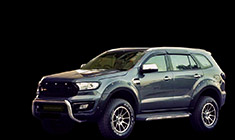News
DIY: Abused Yamaha R15 v2 engine rebuild - Chapter 3
I had quite a large bunch of parts to put together and I wanted to do all of it in one go because the parts were all stored in oil
BHPian that_sedate_guy recently shared this with other enthusiasts:
Ladies and gents, were back in business with chapter three!
Starting with the crankcase gears, here’s where a bit of know-how is required because until this point, the assembly is quite straightforward. I had quite a large bunch of parts to put together and I wanted to do all of it in one go because the parts were all stored in oil and now that they were taken out, they had to be kept with the oily film intact and kept free from dust and dirt. This meant that I had to close up the crankcase as quickly as possible. You might notice the balancer shaft in this picture because this is an older photo and I forgot to take pictures of just the outer gears.

The very first assembly to go in was the oil pump because this sat at the farthest side. The pump in itself was a quick bolt-on job but the original screws were completely bulged out and I had to get new ones (M5 X 25), applied some Anabond thread locker and fitted the pump. The splash plate was next which was also fixed in place by two thread locked screws.
Simultaneously, I also took care of the gear selector fork assembly and fixed the spring in place. A word of caution when working with springs is to always load springs with tools and not with bare hands. Also, never sit close to loaded but not seated springs when trying to wedge them in. Always stay out of the direct ricochet path of the spring. Even if it were to bounce back and hit you after the first hit, it would not end up in an injury because the energy would already have been dissipated to acceptable levels.
Right next was where some care was required. I’ll take you through a boring theory class of that now.
The engine converts the high impact energy of a reciprocating mass into rotary kinetic energy and this kinetic energy is in-turn, generated at the piston only at one stroke which means that the engine needs momentum to carry on through the remaining three strokes. Now, when the engine is engaged to the gears, the vehicle’s momentum takes care of keeping the engine alive (the reason why engines stall when in gear and too low a speed). But when the engine is idling, internal masses need to be put in to provide a counter-mass and keep the crank rotating. This is taken care of by the crank flywheel which stores surplus energy and releases it when the engine doesn’t develop power.
Even though the crank is a rotating mass, it is an unbalanced rotating mass and hence leads to vibrations when it rotates. Coupled with the reciprocating mass of the piston and the oscillating mass of the connecting rod, the engine produces a lot of vibrations which is a key disadvantage of single cylinder vehicles. To reduce this inherent unpleasantness, one of the many solutions is to have an intentionally equal and opposite unbalanced mass relative to the crank affixed to a shaft. This is called the counterweight or the counter-mass and is directly coupled to each other by gears. This shaft is called the balancer or the balancer shaft. These elements combined lead to the smoothness we all relate to well-made-machines.
With this short knowledge snippet, let’s get back on track. To keep the unbalanced mass rotating exactly opposite to the crank mass, the balancer shaft needs to be gear driven in the opposite direction in the same speed ratio. These gears were the first to go in.

The gears have a simple but effective PokaYoke (Japanese term for fool-proofing) system. The gears are orientation-locked to the respective shafts by woodruff keys and are in-turn orientation-locked to each other by identification marks on both the gears which are meant to be aligned upon assembly.
This is a very important step. Minor errors like misalignment by a tooth or two between the gears will create issues like excessive noise, uncontrolled resonant vibrations and can even lead to bearing failure although such chances are rare because the vibrations will be quite pronounced.
Missing the alignment by more than two gear teeth will lead to very heavy vibrations that will render the motorcycle unusable.
Warning: It is also possible to assemble the balancer shaft at a larger angular mismatch but such large angles will not cause vibrations because at the very first crank, the balancer mass will wedge itself against the crank, damaging almost the entire crankshaft and balancer shaft system, including the gears and the bearings. The engine will behave as if it has completely seized up and repairing it will be an extremely time-consuming, difficult and costly affair. Please exercise extra caution in this step should anyone attempt this.
Here, you can see how these markings are to be aligned. In this condition, the crank mass and the balancer mass cancel each other out as intended by the design of the engine.

These gears were then locked by a nut & washer combination and torqued up. To prevent the nut from loosening, the end washer was of a sacrificial bend washer type which was bent towards the hexagonal profile of the nut.

With the balancer gears in place, the clutch assembly was up next. However, I was yet to get a set of new clutch plates so I simply assembled the clutch housing and let it be for the time being.

Following this, I shifted my focus to the other side where the Magneto would reside. I slipped the timing chain first and placed it on the crankshaft sprocket.

The timing chain was then tied with a copper wire and then pulled taut and kept in place to avoid slipping from the sprocket when the flywheel was being mounted.

With the chain in position, assembly of the starter gear, the flywheel with the needle roller bearings, the washers, the half-moon shaft key and the outer washer was done and locked with the magneto lock nut. Here's how they all looked just before going in together.

After that, I affixed both the crankcase covers temporarily with just a couple of screws and started to work on the cylinder block.

I made short work of the lower cylinder gasket and the block.

The piston rings were put in with care to ensure that the ring openings did not match up too much, the keyword being, “too much”. Tutorials and rebuild walkthroughs always swear by arranging the piston rings in very specific angles. However, there are two points to consider
- Piston rings DO NOT have such wide openings when they are assembled inside the cylinder. Piston rings might not look like too much work but they are also precision made components that are designed to slide in the piston groove and exert a sealing force on the cylinder walls while also ensuring that the end gaps are almost fully closed.
- Further, piston rings are not stationary elements. Try all you might and assemble the rings with arc-second precision and the rings will rotate in the grooves at the very first crank. This means that within half a crank, any angle that has been set will start varying.
- In addition to the above point, the rings move at different angular rates. This means that the angular position of each ring with respect to the other does NOT remain constant. Thus the ring openings will meet at different intervals or may not meet at all which cannot be ensured whatsoever.
Hence, I personally would not fret too much about ring orientation. However, it does do good to ensure the angles for the first time during a rebuild because it helps with building a good amount of compression until the oil starts circulating.
In the meantime, I gave the cylinder head to the guys at M.A Auto whom I mentioned before and they did the lapping and setting for me. I fitted up the cam follower arms after a thorough cleaning followed by the camshaft and setup the valve stem clearances as well.


With the cylinder head ready to be put back, I did think of using my homemade tool for putting back the valves after getting them lapped and set. However, the guys at the shop offered to do the entire assembly without extra cost so I decided to spend that half hour with making yet another special tool which I’ll detail below.
Firstly, here’s a picture of the valve tool I made in two minutes from a stainless steel curtain rod.

Now, on to the other tool I was talking about. With the other gears in place, the clutch had to be assembled. I had previously assembled the clutch housing but did not torque it with the wrench. To do that, I was in need of something to rigidly hold the housing in place while I torqued the housing nut. YouTube referrals gave me the idea of using the discarded pressure plates as perfectly meshing holders. I took one such plate and welded it to two rebar pieces using my light duty arc welder. I had to grind and rough up the plate surface and also turn the current up quite a bit to get the weld to stick but soon enough, the tool was ready for duty.

Using this special tool, I locked the clutch housing and tightened it to the full torque. Now, I do not possess a torque wrench and with good ones being eye-wateringly expensive, I simply tightened the fasteners by hand feel. While there was a possibility of a slight overshoot of torque, my past experience in the Machine Assembly factory rewarded me handsomely in terms of torqueing techniques.


Now that the clutch housing was in place, the clutch plates were finally bought and assembled like a nice inedible burger with this arrangement:
Inner friction plate – Pressure plate 1 – Friction plate 1 – Pressure plate 2 – Friction plate 2 – Pressure plate 3 – Outer friction plate
Unfortunately I did not record the clutch assembly since I was so engrossed with setting the clutch actuator. The actuator rod went in first, followed by the load transfer ball and finally on to the actuator nut. One might wonder about the function of the ball. It serves as a ball and socket joint between the trans-rotational clutch shaft and the clutch actuator nut which moves only forward and back. On top of this goes the outer clutch housing held in place by the four clutch springs and torqued with their respective hexagonal screws.
Clutch setting: This is an important step during a rebuild or a clutch job. The clutch plates need to separate and free up when actuated and engage together when the clutch is not in operation. The distance adjustment of the clutch actuator takes care of this but this has to be done properly otherwise, the clutch actuator mechanism can either break or the clutch will never work properly. To avoid both sides of this unpleasant spectrum, the actuator nut needs to be set to the freest setting and assembled with the housing. The threaded rod of the actuator nut then needs to be tightened just enough to let the nut touch gently but firmly on the outer clutch housing. That’s it! Lock the threaded rod in place with the locknut on the outside and you’re done with a properly set clutch.
Caution: Be very mindful never to overtighten the threaded rod past the butt point because one, it will damage the threads and small auxiliary engine parts can be a pain to source. Two, your clutch will end up in an always half-engaged position. This can:
- Rapidly wear off the new friction plates and leave you wondering why the new clutch went to heaven in a week.
- Overheat your engine to ridiculous amounts
- Burn your engine oil and cause nasty deposits, crankcase debris and the like.
Once the clutch was assembled, the crankcase covers were put back but the screws still could not be tightened fully because there were a few screws missing from the previous time the engine was rebuilt. Until I made time to go out and sourced the screws, I temporarily fastened the crankcase covers and moved on to one of the most irritating parts of the build, the timing adjustment.
Within moments, the cylinder head was mounted on the cylinder block and the engine block screws were installed. However, the fly in the ointment was making sure the timing chain did not slip out of the crankshaft. I ensured this by tying the chain to the outer part of the engine with a copper wire and set about tightening the cylinder head but not to the full torque spec because I did not want to wrestle the bolts in case I messed up the timing adjustments and had to open it back up.

Now, the actual driving components were all put in shape but the most important part of what makes an IC engine and engine and not a catastrophe is the timing system which I’m detailing down in writing as we speak here. Hope to get that bit out as well in the next part.
Until next time, stay curious, stay learned!
Check out BHPian comments for more insights and information.






.jpg)





_1.jpg)






